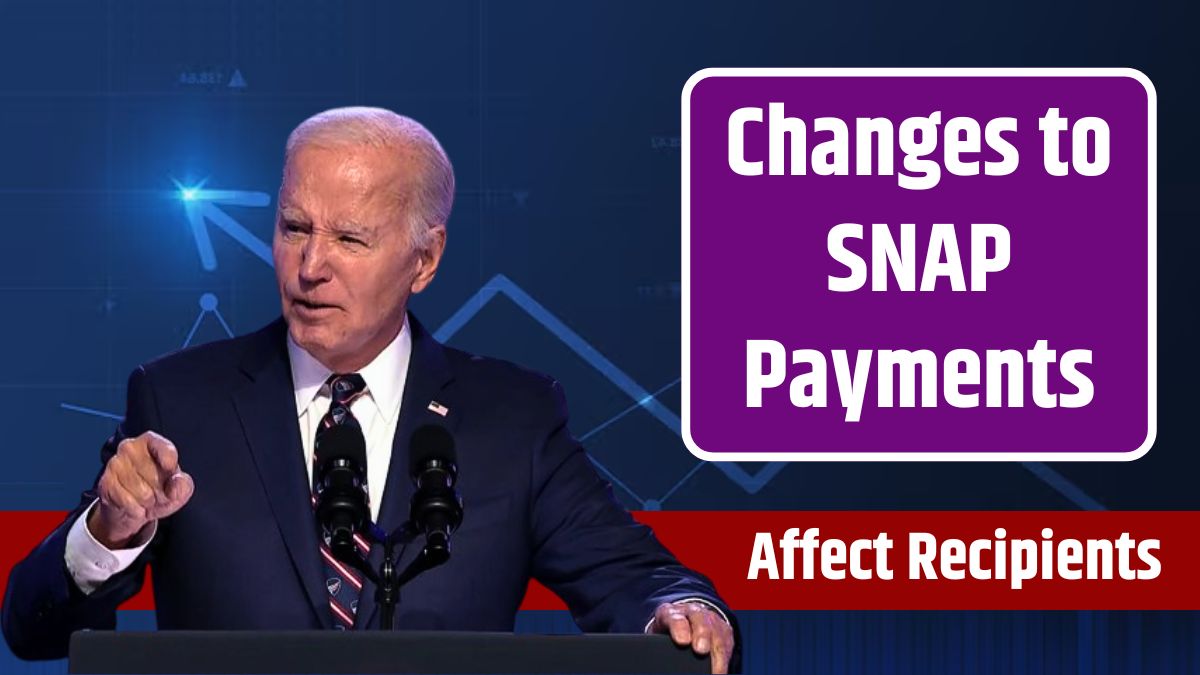SNAP payments help some of the neediest Americans by providing financial assistance to low-income households to purchase nutritious food at local stores. Although the Supplemental Nutrition Assistance Program (SNAP) is designed to provide food security to low-income families in the country, a specific group of beneficiaries may be affected by the new rule.
As a result, if you do not complete these labor requirements, your SNAP payments may be suspended. If you currently qualify for these monthly benefits, check for all the information about the rule that could compromise your money.
Table of Contents
Overview
SNAP is the largest nutrition assistance program in the United States, serving an average of 41.2 million participants each month in fiscal year 2022, with federal spending totaling $119.5 billion. Benefits cost an average of $230.88 per participant each month. In fiscal year 2022, 12.4% of the US population received SNAP benefits, accounting for roughly 65 percent of USDA nutrition assistance spending.
Calculation
The Supplemental Nutrition Assistance Program is available to most families and individuals who meet the program’s income eligibility requirements. A family’s income and specific expenses determine the amount of SNAP benefits they receive. Families receiving SNAP benefits are expected to spend 30 percent of their net income on food. Families with no net income receive the maximum benefit, which is determined by the price of the USDA’s Thrifty Food Plan (TFP).
Assuming that low-income households take significant steps to stretch their food budgets, the TFP represents the cost of purchasing and cooking a nutritionally adequate diet that meets the Dietary Guidelines for Americans. A long-overdue update to the TFP, which will increase SNAP benefits and make a balanced, nutritious meal more affordable for millions of families, was announced by the USDA in August 2021.
ABAWD Rule
To apply for SNAP payments, applicants must meet standard work criteria and be between the ages of 16 and 59. For instance, to receive these monthly benefits, you must be registered at work and take part in workfare, also known as SNAP Employment and Training, as determined by your state’s SNAP agency.
In addition, you cannot reduce your hours below thirty or quit without a good reason; you must accept a job offer. Lastly, remember that you are exempt from these labor requirements if you currently work thirty hours or more per week or if you meet the work requirements for TANF or another program.
Exemptions
In addition, to keep your SNAP payments, you must be caring for a child under the age of six or an incapacitated person, unable to work because of a physical or mental disability, participating in an alcohol or drug treatment program, or attending school or training at least half time.
For those ages 18 to 52 who can work and have no dependents, it has been common practice to require them to meet the Able-bodied Adult Without Dependents (ABAWD) work requirement to receive SNAP payments for more than three months out of every three years.
New Requirements
As of October 1, those who are 53 and 54 years old also have to meet these requirements. The precise regulations state that anyone who can work between these ages and without dependents must either enroll in a work program like SNAP Employment and Training, which mandates at least 80 hours of employment per month or work or volunteer for at least 80 hours per month. SNAP beneficiaries may fulfill at least 80 hours per month by combining their work and work program hours. The requirements that had previously exempted 53 and 54-year-olds from the time limit were expanded to include them in October.
SNAP remains a crucial program for millions of Americans, providing vital support to ensure food security. Knowing the eligibility criteria, including the new rules, is essential to continue receiving these benefits. If you fall into the newly affected age group, take the necessary steps to comply with the work requirements to avoid disruptions in your SNAP benefits.
FAQs
What is SNAP?
SNAP is a nutrition assistance program for low-income families.
How is SNAP calculated?
It’s based on family income and specific expenses.
What is the ABAWD rule?
It requires able-bodied adults without dependents to meet work requirements.
Who is exempt from work requirements?
Those caring for children under six, disabled, or in treatment programs.
What changed in October?
The ABAWD rule now includes individuals aged 53 and 54.








